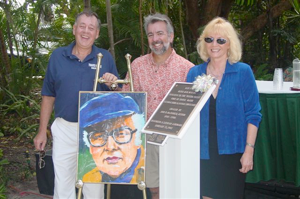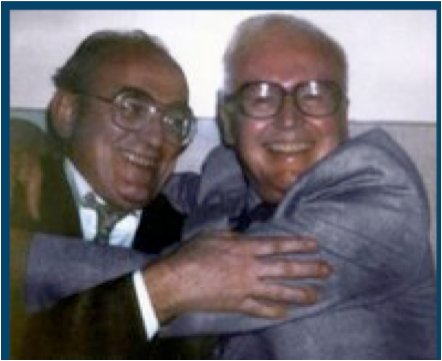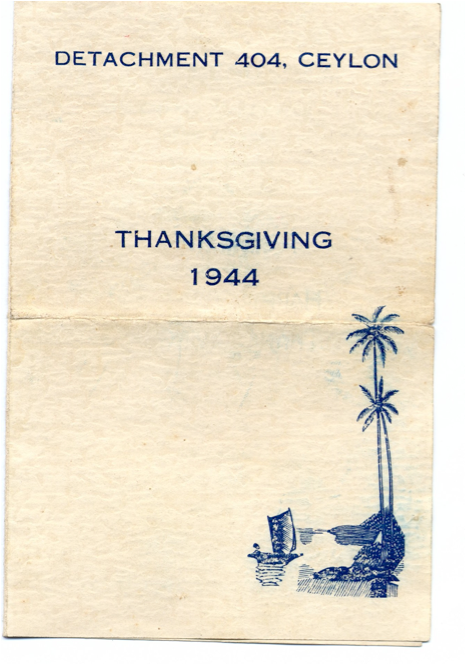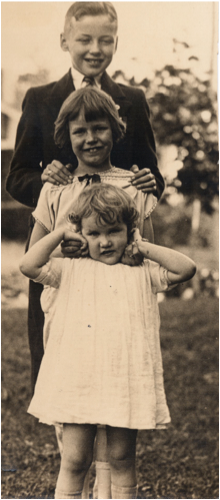DEC members are participating in “Gun Safety “ demonstrations to be held this month ,and the coming months at the PBCC meetings in Dade City and NPR.
Below are some pictures from one of the recent demonstrations in Dade City:




*************************************************************************************************
DEC members attended the March 19, 2013 Board of County Commissioners regular meeting in New Port Richey. Several spoke on the background check issue, and our opinions were reflected in media coverage. Members wore green in memory of the victims of the Sandy Hook massacre.

We have made a special video on the topic as well. Go to
Excellent letter from East Pasco Dems member Fern Williams:


THE DEC RESPONSE TO NEWTOWN:

The following letter has been sent to the County Commissioners by the Democratic Party of Pasco on behalf of the children and parents of our county.
The Pasco Democratic Party calls upon each of you to introduce and pass legislation to end the "gun show loophole" in Pasco County which allows the purchase of assault rifles and other firearms without a background check of the purchaser. This legislation does not take away the rights of gun ownership. It helps ensure the safety of our children and communities so that only those legally allowed to possess firearms do so. We do not want to bury our children because of an assault rifle or other firearm was purchased without a background check or waiting period in Pasco County.
In 1998 72% of Pasco voters approved Amendment 12 to the State Constitution. This Amendment authorizes each county to pass local option legislation that requires a criminal history records check and waiting period of 3 to 5 days in connection with the "sale" of any firearms. It defines "sale" as the transfer of money or other consideration for a firearm where any part of the transaction occurs on property open to public access. It does not apply to holders of concealed weapons permits when purchasing firearms.
This legislation has never been passed by the Pasco County Commission. We are asking that the Commission take a step toward ending gun violence by passing the local option available under Article VIII Section 5 of the Florida Constitution.
Lynn W. Lindeman, Ph.D., Chairman
Pasco Democratic Executive Committee
December 26, 2012
(Note: it may be up to citizens to encourage Commissioners if they do not take up the issue. Follow the issue on tv and in the press.)
********************************************************************************************************
THESE ARTICLES ARE BY CRISSIE BROWN, VICE CHAIR OF THE PASCO DEC
Morning Feature – Talking About Guns, Part I: ‘Rights’ and Wrongs
January 10, 2013
Gun industry supporters often shout about their “rights” … and most of what they shout is highly selective or plainly wrong. (More)
Talking About Guns, Part I: ‘Rights’ and Wrongs
This week Morning Feature invites progressives to join President Obama and Democrats in advocating for sensible gun safety regulations. Today we look at gun industry supporters’ common claims about “rights,” and why they’re often very selective or plainly wrong about Second Amendment law. Tomorrow we’ll see data that disprove gun industry claims of “More guns, less crime.” Saturday we’ll conclude with words and phrases to emphasize, and to avoid, when discussing gun safety regulations with friends, neighbors, and colleagues.
Selective Attention
Gun industry supporters cite the 2008 U.S. Supreme Court case of District of Columbia v. Heller, loudly and often, as reading the Second Amendment to find an individual right “to keep and bear Arms,” regardless of whether one participates in “a well regulated Militia.” And that’s true, as Justice Scalia concluded in writing for the majority:
And whatever else [the Second Amendment] leaves to future evaluation, it surely elevates above all other interests the right of law-abiding, responsible citizens to use arms in defense of hearth and home.
Yet Justice Scalia did not declare a blanket protection on on the right to own any conceivable weapon:
Although we do not undertake an exhaustive historical analysis today of the full scope of the Second Amendment, nothing in our opinion should be taken to cast doubt on longstanding prohibitions on the possession of firearms by felons and the mentally ill, or laws forbidding the carrying of firearms in sensitive places such as schools and government buildings, or laws imposing conditions and qualifications on the commercial sale of arms.
We also recognize another important limitation on the right to keep and carry arms. Miller said, as we have explained, that the sorts of weapons protected were those “in common use at the time.” [...] We think that limitation is fairly supported by the historical tradition of prohibiting the carrying of “dangerous and unusual weapons.” [...]
It may be objected that if weapons that are most useful in military service – M-16 rifles and the like – may be banned, then the Second Amendment right is completely detached from the prefatory clause. But as we have said, the conception of the militia at the time of the Second Amendment’s ratification was the body of all citizens capable of military service, who would bring the sorts of lawful weapons that they possessed at home to militia duty. It may well be true today that a militia, to be as effective as militias in the 18th century, would require sophisticated arms that are highly unusual in society at large. Indeed, it may be true that no amount of small arms could be useful against modern-day bombers and tanks. But the fact that modern developments have limited the degree of fit between the prefatory clause and the protected right cannot change our interpretation of the right.
Yes, Heller announced an individual right “to keep and bear arms,” but that is not an unlimited right. The Second Amendment, Heller held, protects only arms “in common use” by “responsible citizens” for self-defense, hunting, and other lawful activities. And the Court recognizes the government’s authority to regulate even those weapons with bans on own possession by felons and the mentally ill, bans on carrying weapons in sensitive places like schools and public buildings, and imposing conditions and qualifications – read: licensing and background checks – on gun sales.
A ‘Right’ to Revolution?
Moreover, the specific weapons that Heller excludes – machineguns and other “weapons that are most useful in military service” – disproves any claim that the Second Amendment was written to guarantee a “right of revolution.” We have no such right, no more than did the Founders when they rebelled against Britain. They committed treason in doing so, and they knew it. As Benjamin Franklin famously said upon signing the Declaration of Independence, “We must all hang together, or assuredly we shall all hang separately.”
Franklin’s words are especially telling in light of right wing conspiracy monger Alex Jones’ outburst in an interview with CNN’s Piers Morgan:
Like many gun industry backers, Jones quotes China’s Mao Zedong, who wrote: “Political power grows out of the barrel of a gun.” (And like many gun industry backers, Jones omitted the first part of the quote: “Every Communist must grasp the truth.”) He then launches into an angry diatribe about the Second Amendment being written to ensure citizens can fight against “tyrannical government.”
But the plain fact is that the Second Amendment does not authorize Americans to take up arms against our government, as the Supreme Court held in Ex Parte Milligan:
It is proper to say, although Milligan’s trial and conviction by a military commission was illegal, yet, if guilty of the crimes imputed to him, and his guilt had been ascertained by an established court and impartial jury, he deserved severe punishment.
Had Milligan and others like him been tried and convicted of treason in civilian courts, their convictions would have been upheld. Article III, Section 3 of the Constitution defines treason as “levying War against [the United States],” and men like Jones advocate exactly that when they encourage listeners to stock up on guns to fight against “government tyranny” …
… especially when you consider that Jones calls the Affordable Care Act “tyrannical.” By implication, Jones must believe armed marauders destroying a community health center funded by Obamacare would be protected by the Second Amendment. They would be fighting against “tyrannical government,” after all….
“I can’t think of a better advertisement for gun control than Alex Jones’ interview last night,” Morgan told CNN the next day.
I agree.
"©2013, <http://BPICampus.com>BPICampus.com, used by permission"
************
Morning Feature – Talking About Guns, Part II: More Guns, More Crime
January 11, 2013
Gun industry backers love to cite John Lott’s 2005 book More Guns, Less Crime, as it’s good for gun sales. But Lott’s work has been debunked, and better studies confirm the obvious conclusion: more guns lead to more crime. (More)
Talking About Guns, Part II: More Guns, More Crime
This week Morning Feature invites progressives to join President Obama and Democrats in advocating for sensible gun safety regulations. Yesterday we looked at gun industry supporters’ common claims about “rights,” and why they’re often very selective or plainly wrong about Second Amendment law. Today we see data that disprove gun industry claims of “More guns, less crime.” Saturday we’ll conclude with words and phrases to emphasize, and to avoid, when discussing gun safety regulations with friends, neighbors, and colleagues.
The Obvious Conclusion
It makes intuitive sense that a society awash in guns would have more gun crimes. And while intuitive sense is not always a reliable guide, in this case it’s true. Consider this map showing per-capita gun violence by state, from Joy Reid’s The Reid Report:
While gun industry supporters routinely cite higher crime rates in gun-restricted urban areas like New York City, Chicago, or Los Angeles as proof that gun regulations don’t work … you’re more likely to get shot in Vermont than in New York, in Indiana more than in Illinois, and in Arizona than in California. Cities have higher crime rates for the same reason cities have higher rates of artistic and economic innovation: more people interacting more often generates more opportunities … for good or ill.
More guns … kills
Florida state representative Dennis Baxley (R-Ocala) was unapologetic about authoring the “Stand Your Ground” (SYG) law that led to the death of 17-year-old Trayvon Martin last February, saying the law has “saved thousands of people’s lives.” Yet Rep. Baxley offered no evidence for that claim, and it’s unlikely he could.
In fact, a study by Texas A&M economists Cheng Cheng and Mark Hoekstra found that states with SYG laws had increased homicide rates:
More significantly, results indicate that [SYG] laws increase total homicides by 7 to 9 percent. Put differently, the laws induce an additional 500 to 700 homicides per year across the 23 states in our sample that enacted [SYG] laws. This finding is robust to a wide set of difference-in-differences specifications, including region-by-year fixed effects, state-specific linear time trends, and controls for time-varying factors such as economic conditions and policing and incarceration rates. These findings provide evidence that lowering the expected cost of lethal force causes there to be more of it.
What’s more, Cheng and Hoekstra found such laws did not deter burglary, robbery, or aggravated assault … the crimes that gun industry backers say concealed carry and SYG laws will prevent:
We find no evidence that [SYG] law deters crime. Furthermore, our estimates are sufficiently precise as to rule out moderate-sized deterrence effects. Thus, while our view is that it is a priori reasonable to expect that strengthening self-defense law would deter crime, we find this is not the case.
Indeed a 2004 American Journal of Epidemiology study by Linda Dahlberg, Robin Ikeda, and Marcie-jo Kresnow found that “Simply having a gun in the home increased the risk of a firearm homicide or firearm suicide in the home.” As for claims about gun owners deterring crimes, a 2000 Harvard study published in Injury Prevention found:
Results – Even after excluding many reported firearm victimizations, far more survey respondents report having been threatened or intimidated with a gun than having used a gun to protect themselves. A majority of the reported self defense gun uses were rated as probably illegal by a majority of judges. This was so even under the assumption that the respondent had a permit to own and carry the gun, and that the respondent had described the event honestly.
Conclusions – Guns are used to threaten and intimidate far more often than they are used in self defense. Most self reported self defense gun uses may well be illegal and against the interests of society.
A Lott of trash
So what about John Lott and his supposed proof that more guns equals less crime? ScienceBlogs Tim Lambert looked at the data and concluded “It looks as if Lott might have been caught cooking his “more guns, less crime” data.”
Rutgers University professor Ted Goertzel related several statistical flaws in Lott’s work, in an article for the Skeptical Inquirer, including a study that used Dr. Lott’s equations and reached a different result, simply by excluding data from Florida. If a statistical model only works with specific data, crunched in a specific way – including identified calculation errors that the author denies having made – that’s pretty much the definition of “junk science.”
As law professors Ian Ayres and John Donohue concluded:
Indeed, the probabilistic underpinnings of statistical analysis suggest that running regressions for nine different crime categories to see if there is any measurable impact on crime will, by chance alone, frequently generate estimates that on their face are statistically significant. Therefore, it may well be the case that the scattered negative coefficients for various violent crime categories, which on their face suggest that crime decreases with passage of shall-issue laws, should be thought of as statistical artifacts.
Simply, Lott’s hypothesis belongs in the same bin as arguing that standing on one foot while flipping a coin will cause the coin to land heads-up, based on a single test.
Lott’s “More Guns, Less Crime” belongs in … the trash bin.
+++++
Happy Friday!
"©2013 BPICampus.com, used by permission"
*************
Morning Feature – Talking About Guns, Part III: Words to Use, Words to Avoid (Non-Cynical Saturday)
January 12, 2013
Messaging is important, and words matter. As we join discussions on how to reduce gun violence, we must use words and phrases that evoke community safety. (More)
Talking About Guns, Part III: Words to Use, Words to Avoid (Non-Cynical Saturday)
This week Morning Feature invites progressives to join President Obama and Democrats in advocating for sensible gun safety regulations. Thursday we looked at gun industry supporters’ common claims about “rights,” and why they’re often very selective or plainly wrong about Second Amendment law. Yesterday we saw data that disprove gun industry claims of “More guns, less crime.” Today we conclude with words and phrases to emphasize, and to avoid, when discussing gun safety regulations with friends, neighbors, and colleagues.
“Preventing Massacres”
Gun industry supporters would love to debate “gun rights.” A December Gallup poll found that 74% of Americans oppose handgun bans and only a narrow 51% majority favor bans on semi-automatic rifles. That same poll showed 58% support for stricter gun laws, with 92% favoring better background checks and 62% favoring bans on high-capacity magazines. Still, if the discussion is framed in terms of “gun rights,” gun industry supporters will usually win the argument.
Indeed progressives should avoid the phrase “gun control,” cognitive linguist George Lakoff told the New York Daily News. “Being ‘controlled’ [makes people] think Big Brother is coming after them.” Dr. Lakoff suggests “responsible gun safety,” and Vice President Biden used the term “gun safety” three times in his press conference on Thursday.
I agree that “gun safety” is a stronger term … but we progressives should talk about “preventing massacres,” for two reasons.
First, the violent crime rate, including gun crimes, has been falling since the early 1990s. The reasons include better police work, longer sentences for violent criminals, the end of the 1980s crack epidemic, and women’s health care freedom, and reduced exposure to environmental lead. But mass shootings have held steady or increased over the past two decades, depending on how they are defined and counted. Many of the proposals being considered may help reduce overall gun violence – including suicides that account for over half of gun-related deaths – but progressives should discuss those in terms of “preventing massacres” like the horror in Newtown.
Second, as progressives we must understand the mainstream media’s preference for neutral terms. Conservatives have howled about liberal media bias for so long that many editors and reporters often actively choose words and phrases that fall in the middle of the dialogue. In this context, if progressives talk about “gun safety” and conservatives talk about “gun rights,” many reporters and editors will see “gun control,” a term that favors conservatives, as neutral. But if progressives talk about “preventing massacres,” more editors and reporters will see “gun safety” as the neutral term … and the debate will focus on “safety” rather than “control.”
“Community safety”
Gun industry supporters are working hard to make this a debate about “tyranny.” And while some in the media will dismiss that as “going to nut country,” as Chris Matthews put it last night on MSNBC’s Hardball, debating “gun control” simply reinforces that frame.
As progressives, we must focus the debate on “community safety.” Most people think of themselves as living in a “community,” whether they live in a small town, a suburban subdivision, or a city neighborhood. The word “community” calls to mind the places you go and people you meet every day: neighbors and children, schools and playgrounds, churches and shops. You want your community to be safe …
… and as we saw yesterday, gun violence is highest in the states with the fewest gun regulations. It’s simple math: the easier your state makes it for anyone to have a gun, the more likely your community will include dangerous people with guns.
And that’s a point you can make without implying that the gun owner across the street – or across the table in the discussion – is individually dangerous. “It’s not you I’m worried about,” you can say. “It’s the guy with a closet full of guns, thousands of rounds of ammunition, and fantasies about fighting off his neighbors as civilization collapses around him.”
“To make sure he can’t keep building an arsenal until he snaps and opens fire at our school or mall,” you can explain, “we need reliable background checks on every gun sale and up-to-date records on ammunition stockpiles.”
Note the reassuring words “reliable” and “up-to-date,” and the disturbing word “stockpile.” We can and should debate what those words will mean in actual legal language. Simply having that debate recognizes that background checks should be “reliable” and there should be “up-to-date” records on people who are “stockpiling” ammunition.
“Make killers stop to reload”
Although it’s likely that Vice President Biden’s proposals will include a ban on “assault weapons,” most progressives should avoid that issue. Unless you’re an expert on firearms, a debate on “assault weapons” will wade into the techno-detail weeds. Once you get in those weeds, gun industry supporters will usually have the advantage.
Instead, we want to “make killers stop to reload.” The Gallup poll above showed strong support for a ban on high-capacity magazines, and Vice President Biden’s proposals will likely define that as clips, magazines, drums, and belts that hold more than ten rounds. Ten rounds is plenty for hunting, target shooting, and self defense … the legitimate reasons a reasonable adult might own a gun.
A ban on high-capacity magazines sidesteps the weedy issue of defining an “assault weapon.” Simply, the point is give victims more chances to get away, and courageous adults more chances to swarm and tackle a shooter, as happened in the 2011 Tucson shooting that killed six and wounded Gabrielle Giffords and the 2008 mass shooting at a Knoxville, Tennessee church. We can’t prevent every mass shooting, but a ban on high-capacity magazines will “make killers stop to reload.”
Messaging matters, and on an issue as emotionally charged and ideologically divisive as gun safety, we progressives will need to practice message discipline. If we focus on “preventing massacres,” improving “community safety,” and “making killers stop to reload” … we can help build public support for sensible laws to help stop the carnage.
+++++
Happy Saturday!
"©"©2013 BPICampus.com, used by permissionDEC members attended the March 19, 2013 Board of County Commissioners regular meeting in New Port Richey. Several spoke on the background check issue, and our opinions were reflected in media coverage. Members wore green in memory of the victims of the Sandy Hook massacre.